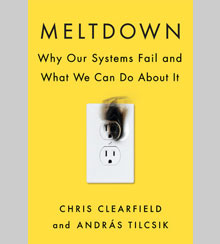strategy+business, June 4, 2018
by Theodore Kinni
All the disasters recounted in Meltdown share characteristics first identified by sociologist Charles Perrow. Now in his nineties, Perrow earned the appellation “master of disaster” for his seminal study of a host of incidents in high-risk settings, starting with the Three Mile Island Nuclear Generating Station accident in 1979. “In Perrow’s view,” explain Clearfield and Tilcsik, “the accident was not a freak occurrence, but a fundamental feature of the nuclear power plant as a system.”
This system — indeed, each of the systems described in Meltdown’s disasters — is complex and tightly coupled: complex in that the systems are nonlinear, with parts sometimes interacting in hidden ways, and tightly coupled in that there is little slack in these systems. A failure in one part quickly, and often, unexpectedly affects other parts. Read the rest here.
















No comments:
Post a Comment